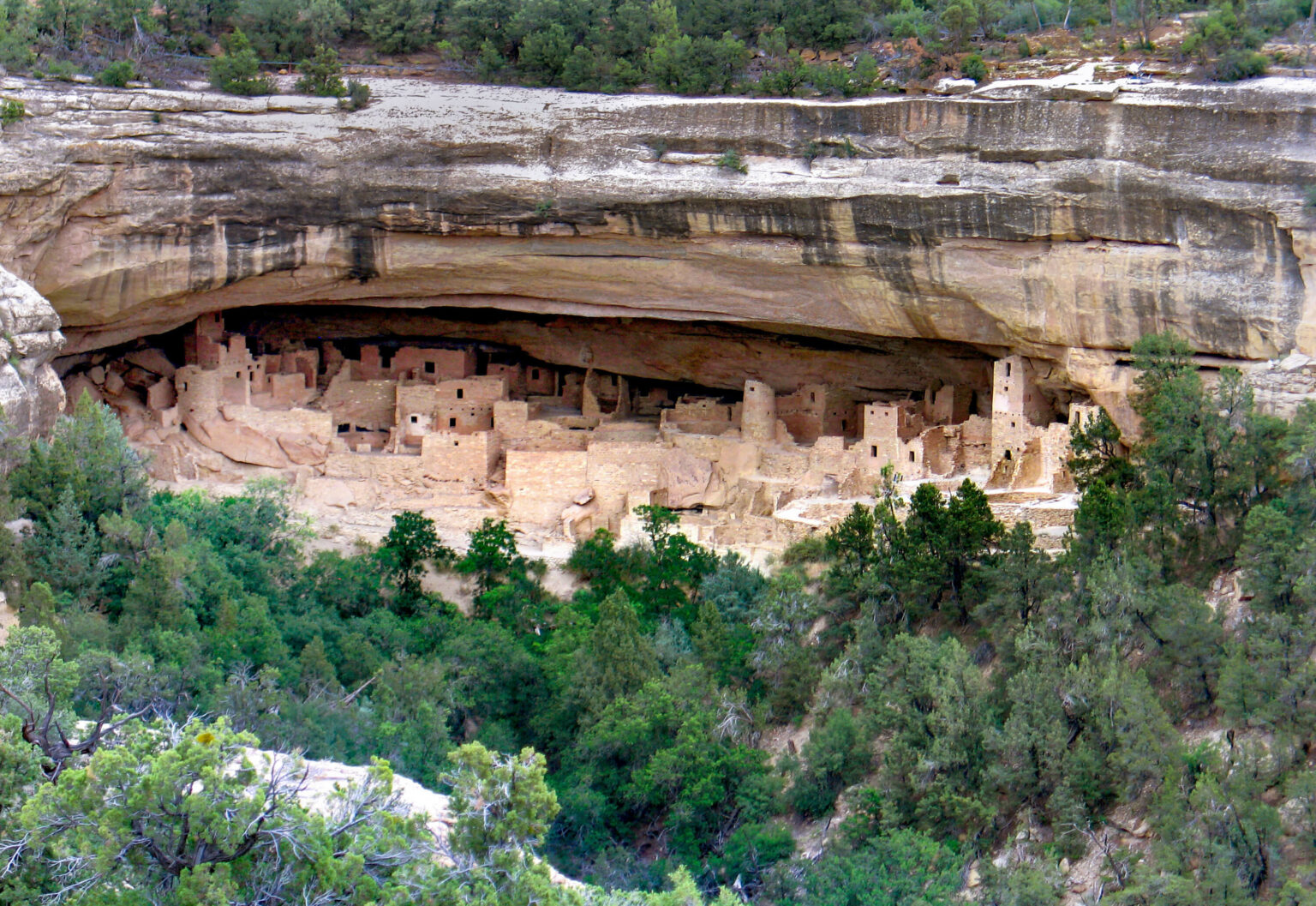Cave Types
Solution Caves
Solution or karst caves are the most common type of cave. These caves form by a chemical reaction where groundwater dissolves the rock slowly. Karst caves form mostly in one of two types of rock: carbonates (limestone, dolomite, and marble) and evaporites (gypsum, anhydrite, and halite).
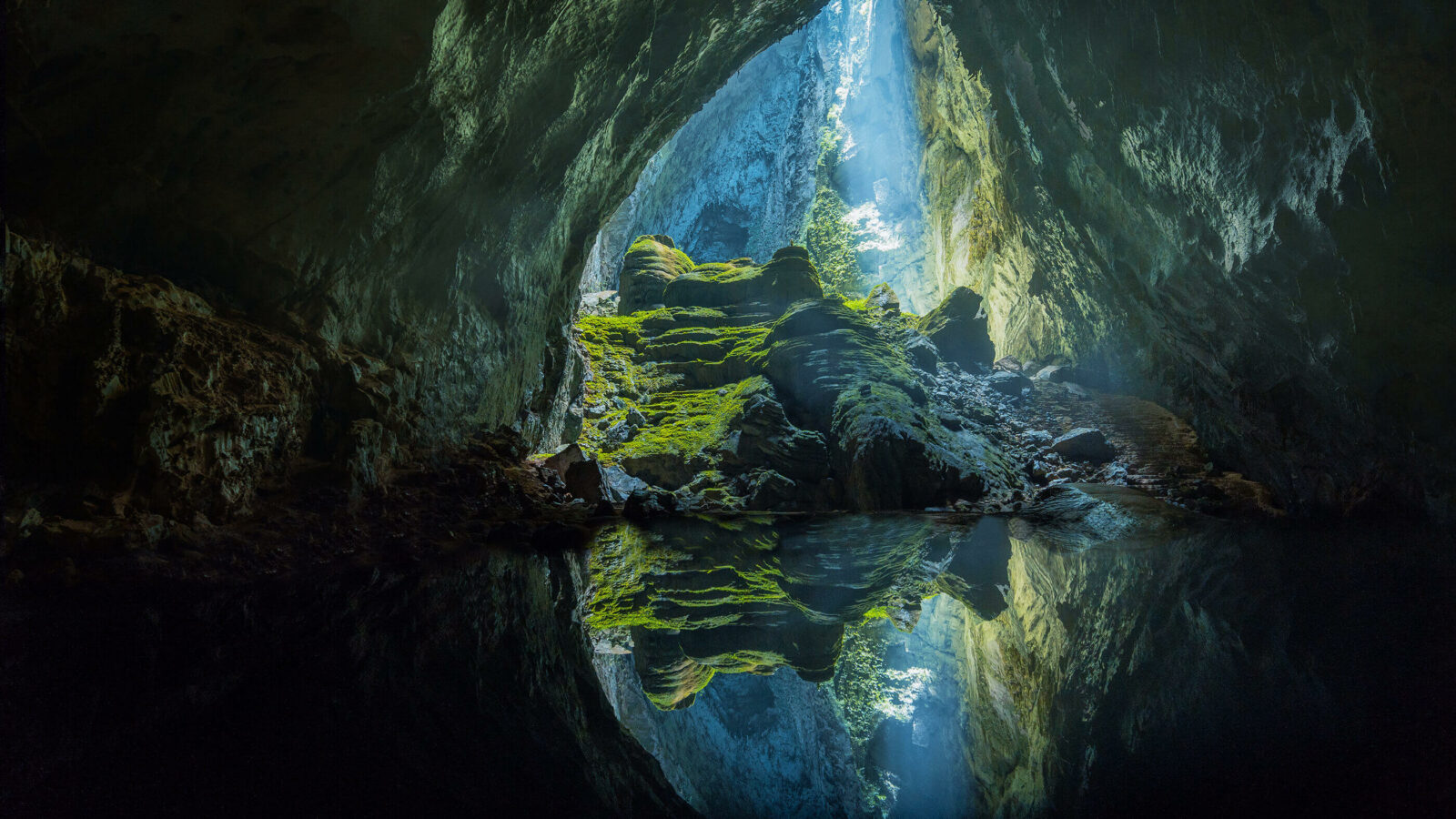
Karst begins with rain. Droplets pick up carbon dioxide (CO2) from the air. When they land and seep into the soil, they absorb more CO2 and form a weak carbonic acid (H2CO3). When carbonic acid comes in contact with calcium carbonate (CaCO3), the primary mineral in carbonate rocks, the bonds between the calcium and carbon atoms are broken, forming bicarbonate and free calcium ions, thus dissolving the rock. Chemical weathering processes like these are known as dissolution. Dissolution also occurs with the evaporite rocks, but water can break those atomic bonds without being acidic.
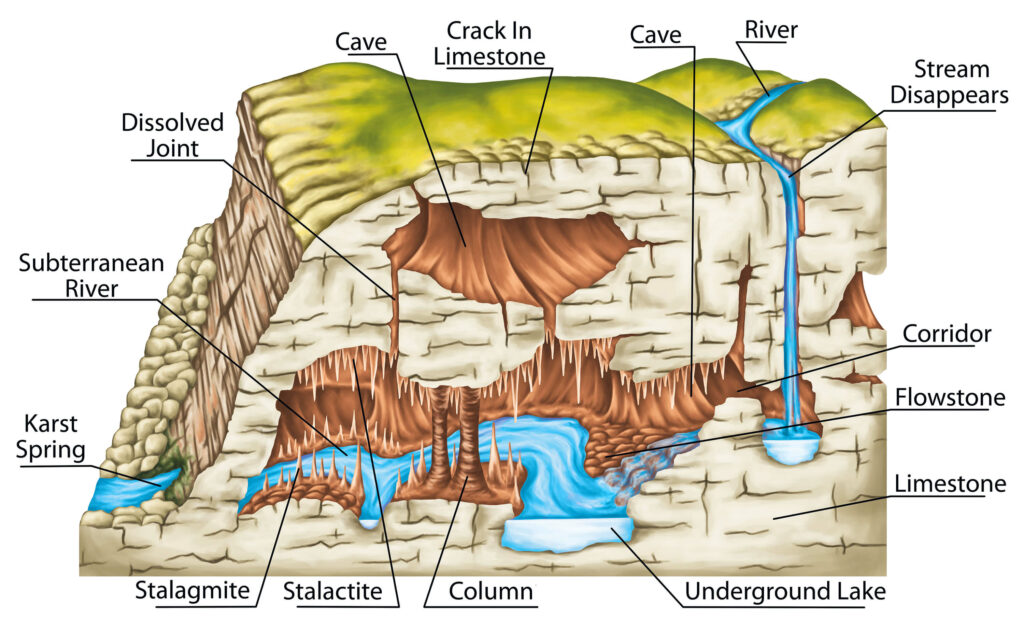
Karst dissolution begins when the rainwater comes into contact with fractures in the rock. The water dissolves the rock around the fracture, increasing its size. This allows more water to enter the fracture the next time it rains, enlarging the fracture even more. The process self-accelerates. After thousands of years, some fractures become large enough for a person to enter, at which time we call them caves.
Sea Caves
Sea caves occur on almost every coast where the waves break onto cliff faces. They form in almost any type of rock by mechanical weathering, where waves crash into weak zones along coastal cliff faces. These caves begin as narrow horizontal or vertical cracks within the cliffs. As waves crash into the rock, they compress water and air into the cracks to weaken and slowly break the rock. The retreating water drags the broken rock particles out. As the crack enlarges, sand and gravel mixed in the waves can enter the cavity to batter the rock further, enlarging the space even faster until it is large enough to be called a cave. This process also occurs along lakes, and those similar caves are called “littoral caves.” The photo on the below (right), shows littoral caves from Michigan’s Pictured Rocks National Lakeshore
The longest sea cave is Matainaka Cave on the Otago coast of New Zealand, with 1.54 km of mapped passages. The world’s largest sea cave by volume is Riko Riko Cave, New Zealand, at 221,494 cubic meters.
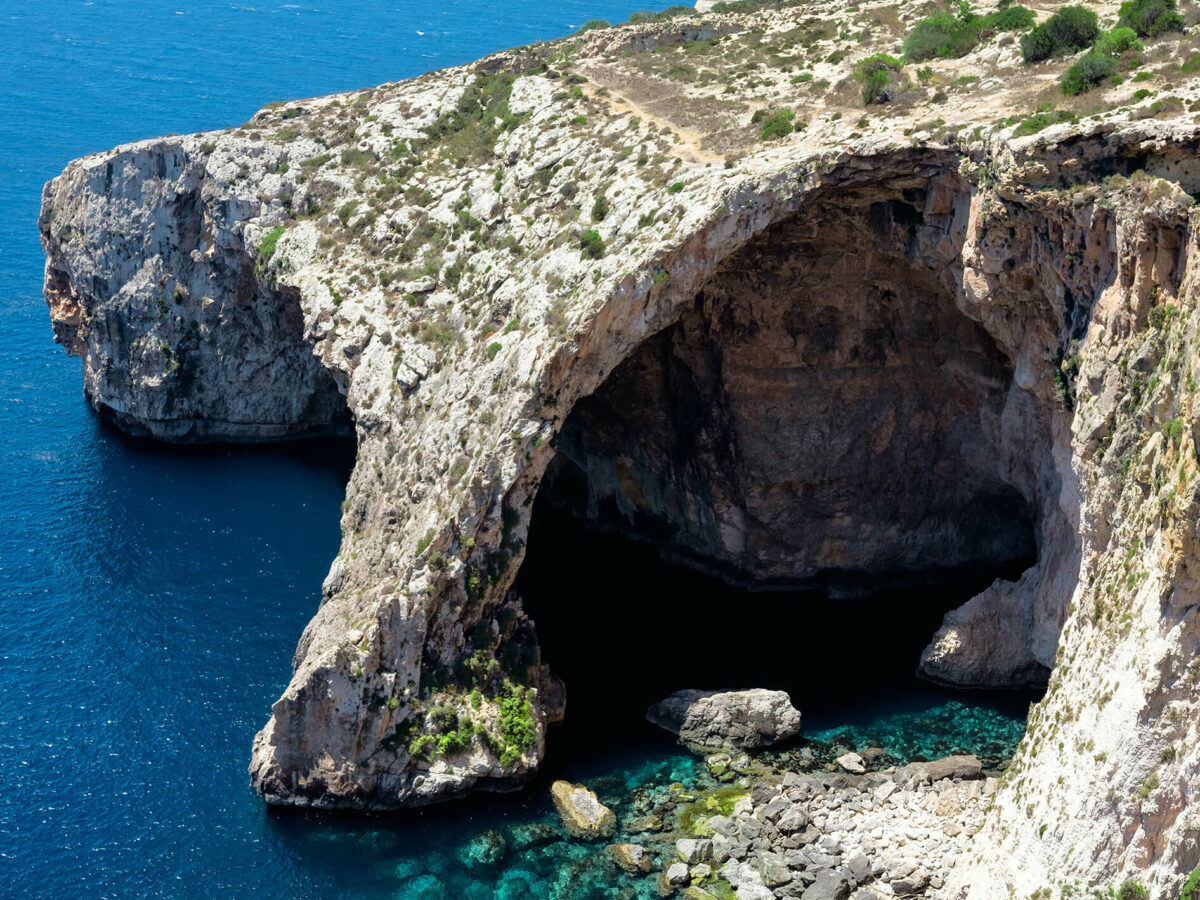
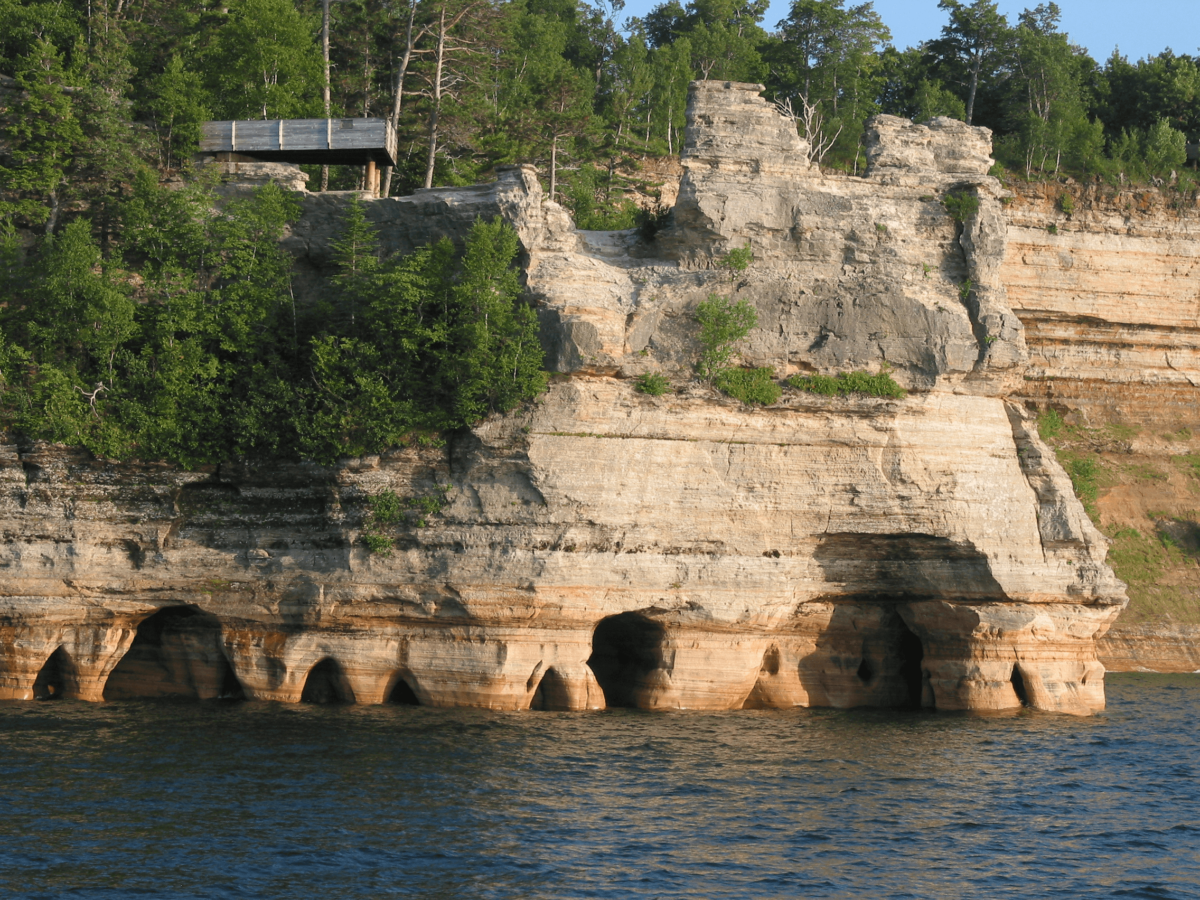
Lava Tubes
Lava tubes are found in volcanic terrains around the world. They occur where molten lava flows or flowed fluidly. As lava moves down the flanks of volcanoes, the surface of the lava cools first and hardens. Next, thinner sections of the lava cool to form insulating walls for tunnels where molten lava continues to flow. When the eruption stops, the last of the molten lava drains leaving behind an empty tube. As remnants of molten lava drip in the tube, they create lava stalactites and stalagmites.
Lava tubes vary in size and complexity. Most are simple, single tubes. Many form braided patterns and on multiple levels. The most extensive lava tubes are found in Hawaii. The longest known is Kazumura Cave with 65.5 km of passages surveyed. It is also the deepest lava tube in the world bottoming out at 1,102 m; although as noted earlier in describing cave depth, this is the vertical difference between the cave’s highest and lowest point—the cave is generally no more than 30 m below the land surface.
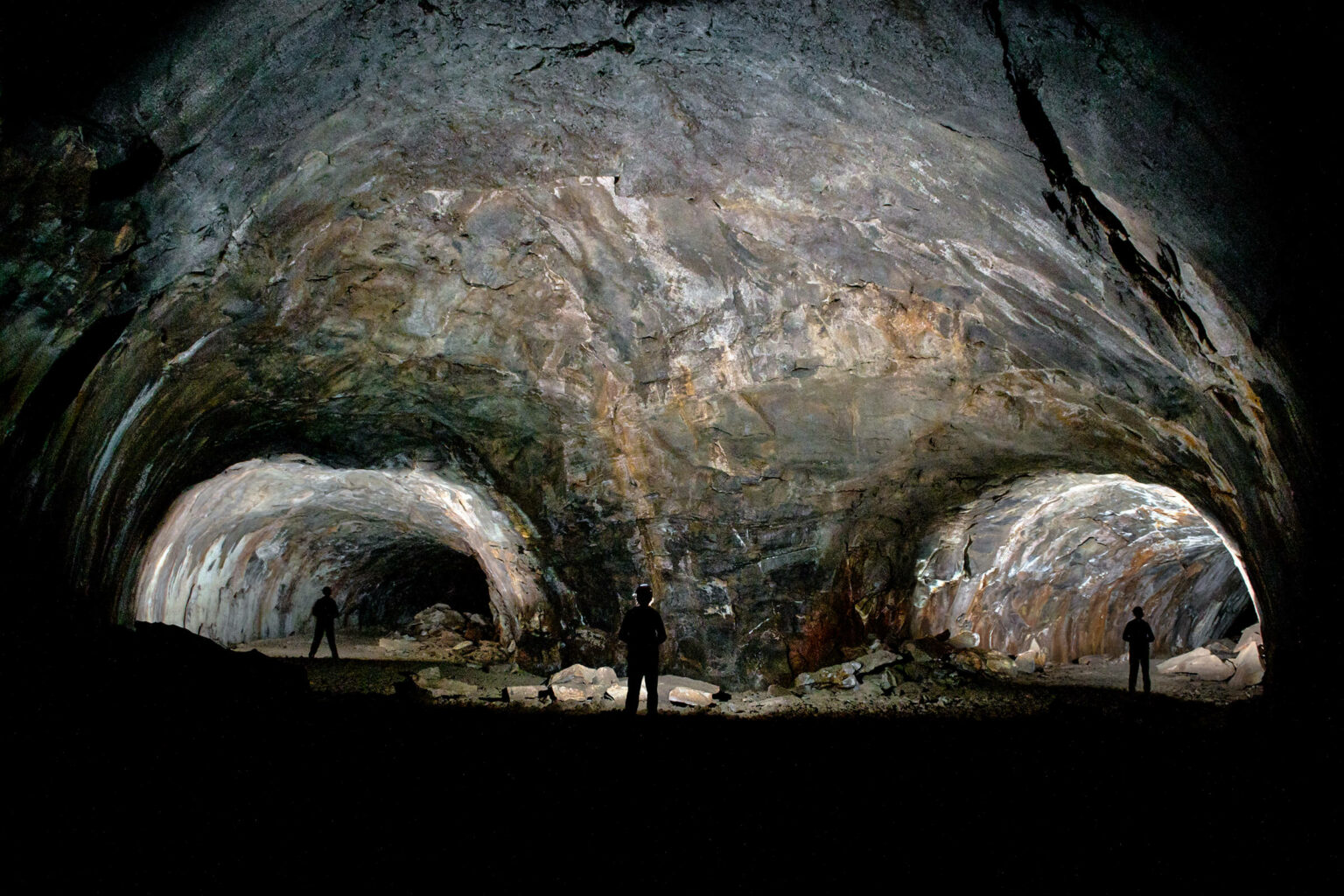
Glacier Caves
As the name implies, glacier caves are formed in glaciers. They are sometimes erroneously called “ice caves,” which are caves formed in rock but contain ice.
There are many processes that create glacier caves. While all are the result of melting ice, the melting is often the result of multiple processes. Most melting occurs during the summer, of course. Some glaciers melt at their base, creating passages with frigid streams that flood out from the bottoms of the glaciers. Most glaciers melt seasonally on the surface. That water flows down cracks in glaciers known as “crevasses,” enlarging them by being slightly above freezing and through friction in the water movement that promotes additional melting. This water adds to the volume of the streams at the bottom of the glaciers. Where streams of melted ice pour down holes on top of a glacier, those holes are called “moulins.” Air moving through glacier caves, especially where it can flow from the bottom of the glacier to the top, also accelerates melting and cave development.
The study of glacier caves is critical for understanding how glaciers are created and how they melt. Glacier caves can be dangerously unstable. Their shapes and forms change from year to year. Collapse of ice ceilings is common. Large cave systems have disappeared as glaciers melt and retreat around the world.
Kverkfjoll Ice Caves are surreally beautiful glacier caves in Iceland and are considered the most well-known glacier caves in the world. This is a place where fire and ice come together. They are formed high on a volcano in the northern edge of the Vatnajokull Ice Cap, the result of the volcano’s warmth below. These and a few other glacier caves are open seasonally to tourists, although they are beginning to close due to the increased risk of collapse from melting due to global increases in temperature.
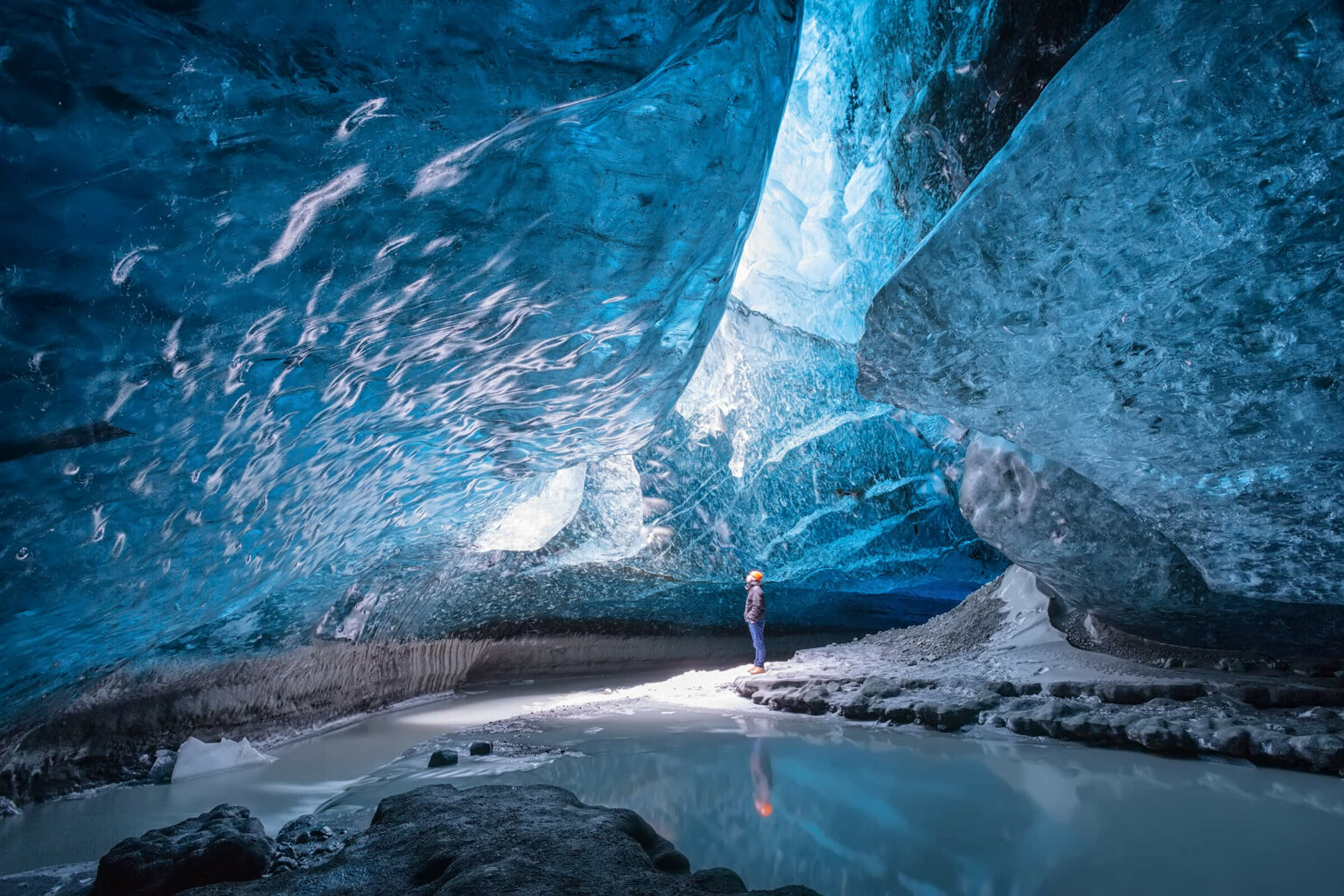
Eolian Caves
Eolian caves are carved by wind and usually form in desert areas. Wind carrying small particles of sand or silt frequently blast against cliffs. Over long periods of time, the wind carves away the walls and floors leaving cave-like cavities in the cliffs. They usually have wide entrances that are often tens of meters long but generally no more than a few meters high. They also rarely extend more than a few meters into the cliffs.
Many eolian caves have vertical stains on their walls where water sometimes seeps down along fractures in the rock, which also weakens the rock and is why the wind can create caves more easily in those cliff areas. These seeps made some of these caves attractive homes for primitive people. Mesa Verde National Park, in the US state of Colorado, is a World Heritage Site known for elaborate Native American homes built inside the shelter of large eolian caves.
